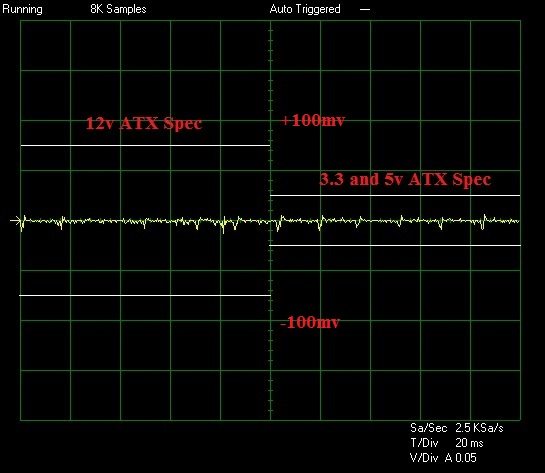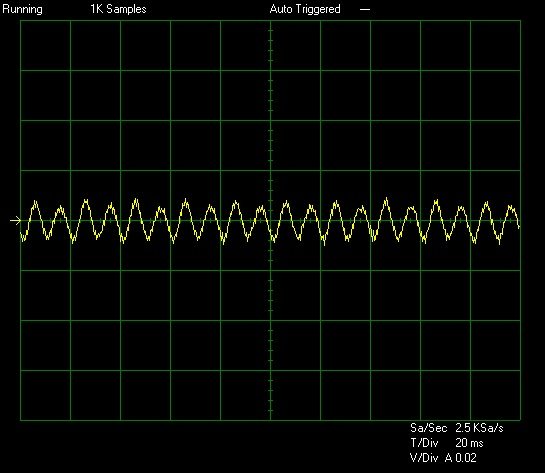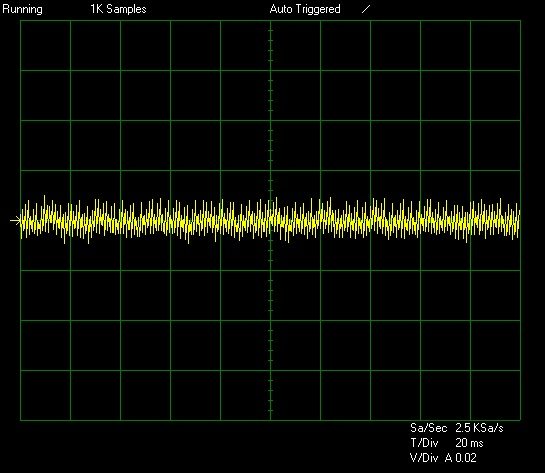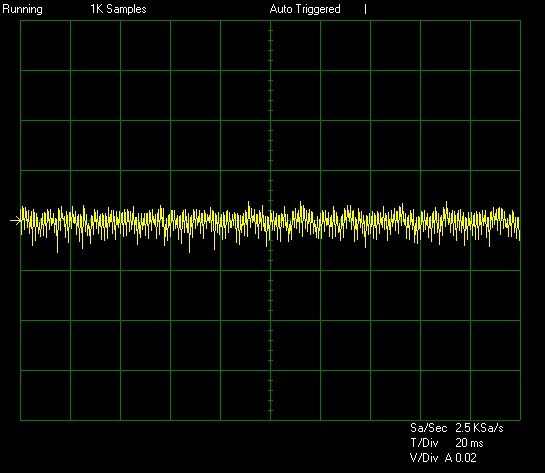InWin Classic Series 750W 80 Plus Platinum PSU Review
Peter Donnell / 8 years ago
Ripple
Noise and Ripple can easily be measured by an oscilloscope. These show how much voltage fluctuation there is on a particular rail. We tested the rail stability of the 3.3 volt, 5 volt and 12 volt rails using an identical time and millivolt scale for all graphs. millivolt ripple is measured by the peak to peak size of the voltage curve.

Sample Ripple Graph
The latest ATX 12 volt version 2.3 specifications state that ripple from peak to peak must be no higher than 50 millivolts for the 3.3 volt and 5 volt rails, while the 12 volt rail is allowed up to 120 millivolts peak to peak to stay within specifications. Millivolt figures are stated to the closest increment of 5 given their variability.
| Load (%) | 3.3V Ripple | 5V Ripple | 12V Ripple |
| 20 | 8.2 | 6 | 30 |
| 40 | 9.8 | 8.2 | 21.4 |
| 60 | 11.8 | 10.2 | 21.4 |
| 80 | 14.4 | 12.6 | 21.6 |
| 100 | 17 | 14 | 22 |
The ripple is nice and low too, easily on par with many other high-end units from the last few years. There was an odd blip at 20% load for the 12V rail, but it’s still well under the 50mv target.
3.3 volt @ 100%

5 volt @ 100%

12 volt @ 100%




















